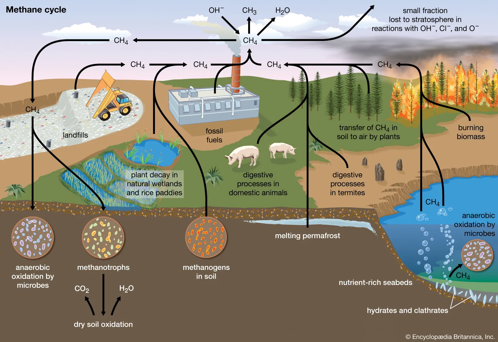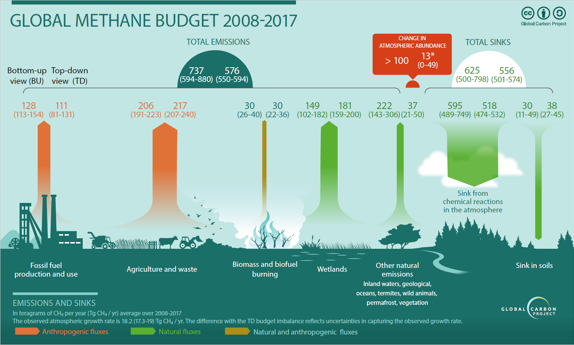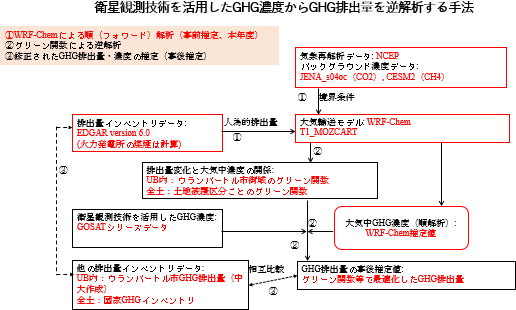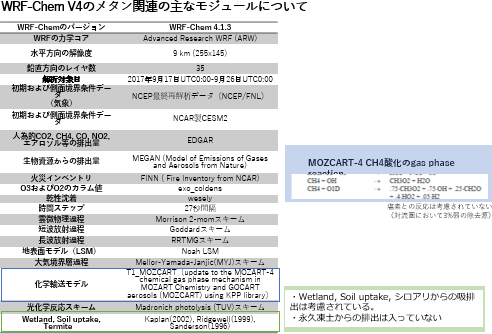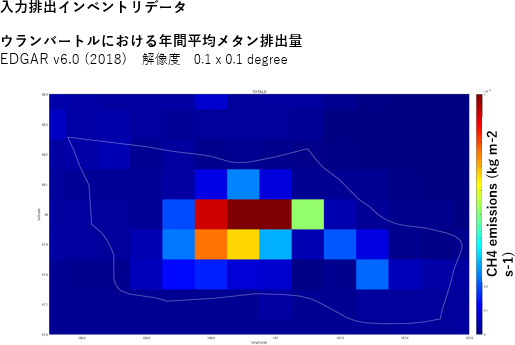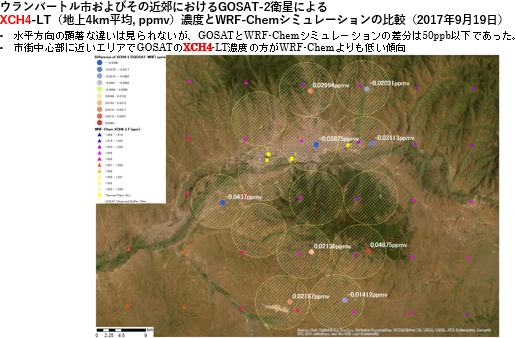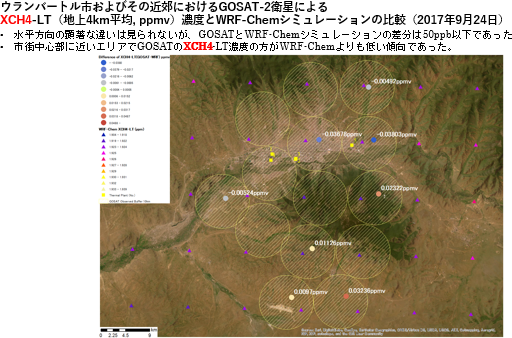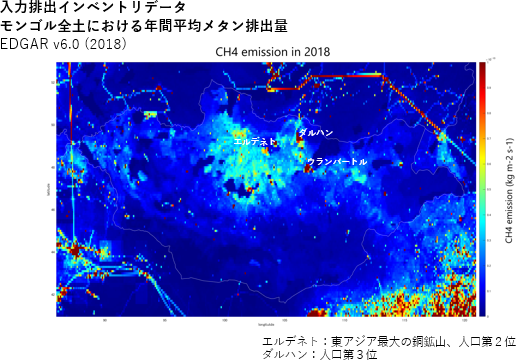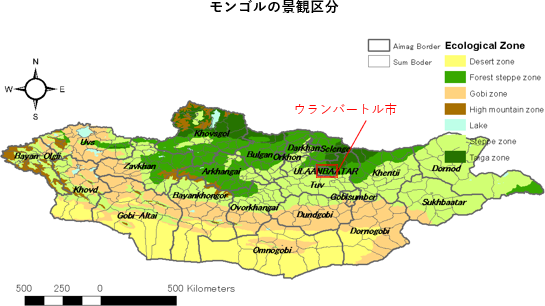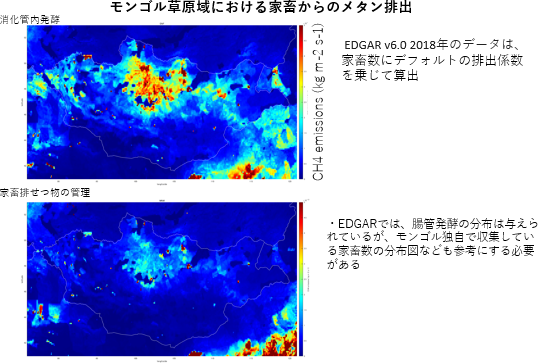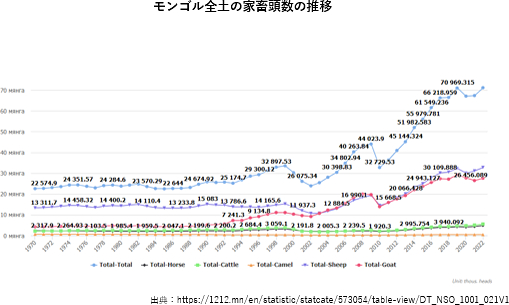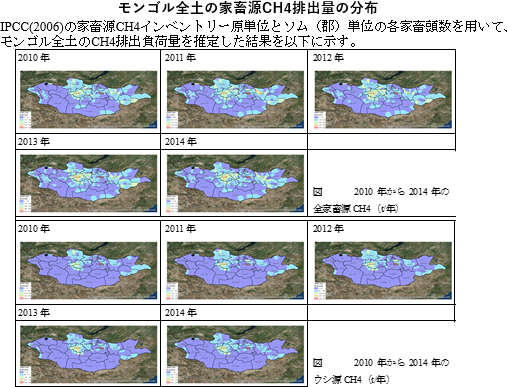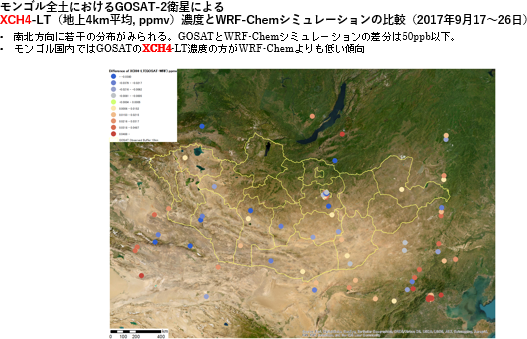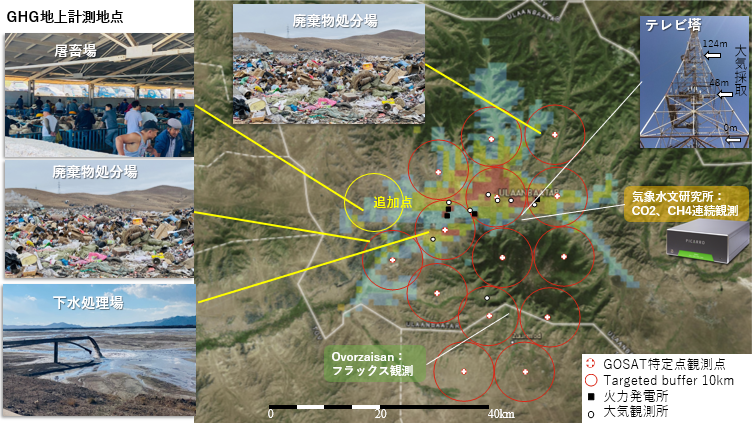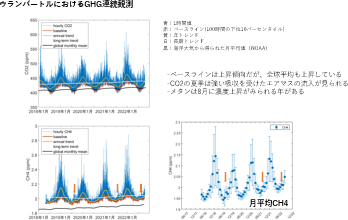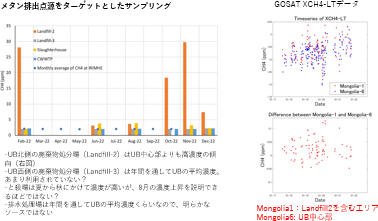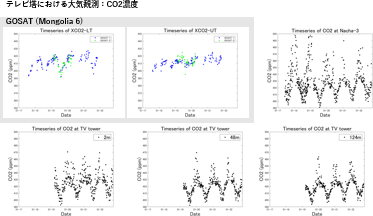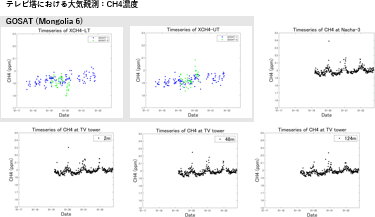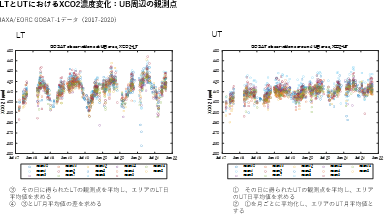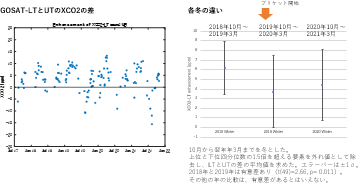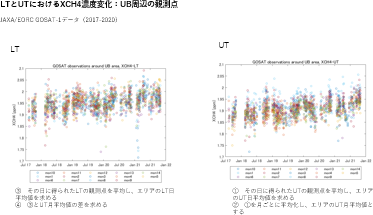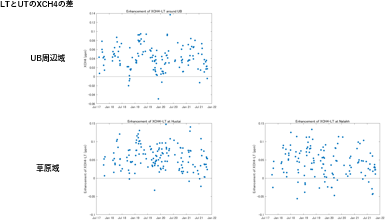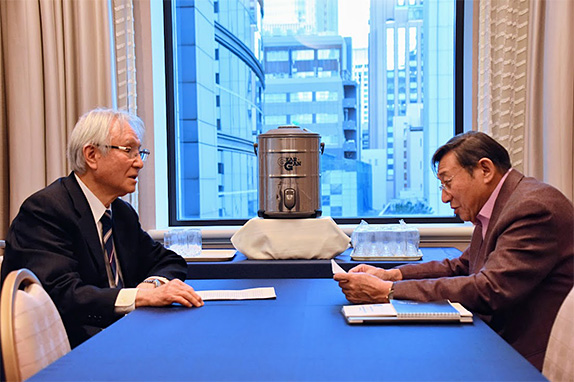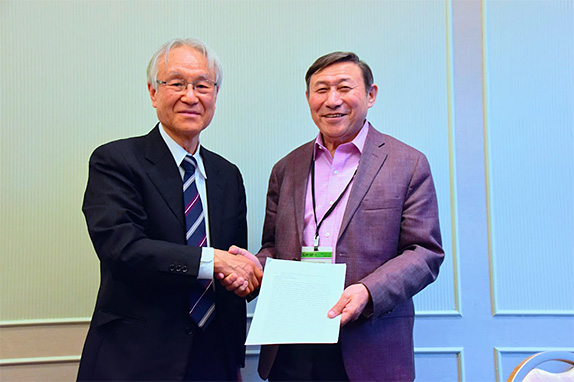In fiscal year 2021, we constructed an atmospheric transport model utilizing the nationwide CO2 and CH4 inventory of Ulaanbaatar city and Mongolia established in the same year. This model allowed us to calculate preliminary estimates of CO2 and CH4 emissions and concentrations across Mongolia.
For the entire territory of Mongolia and the city of Ulaanbaatar, we conducted forward analysis for CO2 and CH4 using the regional chemical transport model (WRF-Chem). We utilized The Emissions Database for Global Atmospheric Research version 6.0 (EDGARv6.0) as the a priori emission amount, JENA_s04oc (provided by the Max-Planck Institute) for CO2, and the Community Earth System Model 2 (CESM2) for CH4 as boundary conditions.
The forward analysis results for CH4 showed that the difference between XCH4-LT (column-averaged CH4 concentration at about 4km above ground) concentrations from GOSAT observations and WRF-Chem simulations was within approximately 50 ppb. Generally, GOSAT showed lower CH4 concentrations within the territory of Mongolia.
Given that the standard deviation for CH4 against the Total Carbon Column Observing Network (TCCON) for GOSAT-1 is 11.24 ppb, it is expected that this level of difference can be sufficiently detected when conducting inverse analysis for CH4 emissions.

